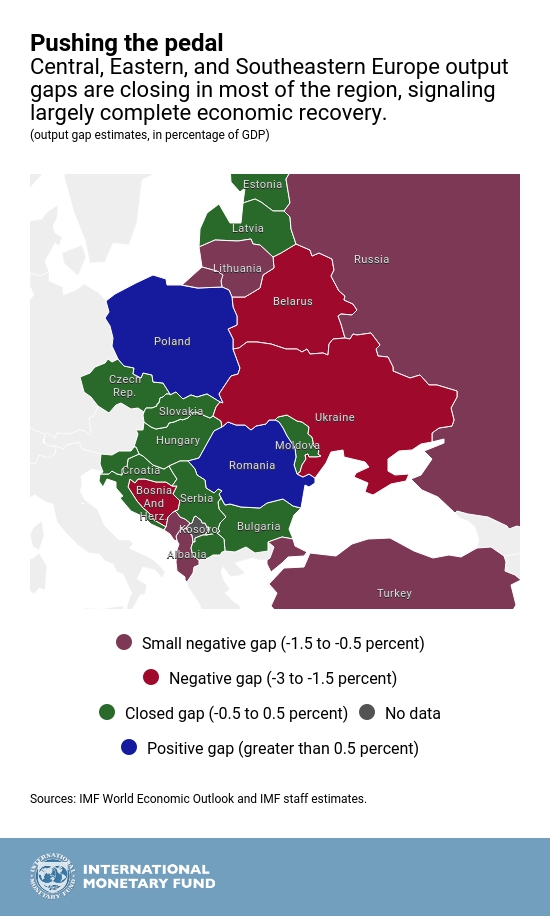May 22, 2017
Version in Русский (Russian)
Most of the countries of Central, Eastern, and Southeastern Europe will see their economies humming away at a strong growth rate in 2017. A measure of their success at fully utilizing their economic machine is the output gap—the difference between what the economy is currently producing, and what it can produce when it is at full capacity.
Our Chart of the Week from a recently published report on the Central, Eastern, and Southeastern European region shows how close these economies come to performing at full potential.
Overall, growth has increased in the region, and indicators, such as the availability of workers, point to further pick up everywhere but Turkey, which accounts for 21 percent of GDP in the region.
Some economies, notably Turkey and the largest economy in the region, Russia, which together account for 62 percent of GDP in the region, appear to operate somewhat below capacity, because of insufficient investment and demand, respectively. In turn, most of the Baltic countries, Central Eastern Europe, and Southeastern Europe are around full capacity, or have even surpassed as unemployment rates have declined to pre-crisis lows. Belarus, Bosnia and Herzegovina, and Ukraine are still far from going full throttle.
Surpassing the full capacity point usually brings with it rising wages as the available workforce dwindles. Inflation also tends to rise because consumers’ demand for products and services increases. Yet, prices have not gone up significantly in the region despite the widespread closure of the output gap, growing wages, and a less idle workforce everywhere but in Turkey and the Commonwealth of Independent States. That is partly because of still low imported inflation from the euro area.





